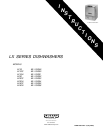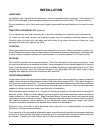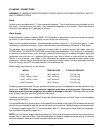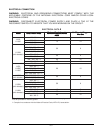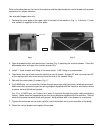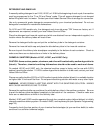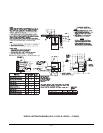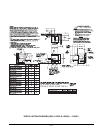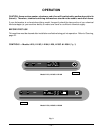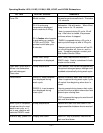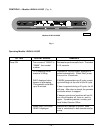
– 4 –
INSTALLATION
UNPACKING
Immediately after unpacking the dishwasher, check for possible shipping damage. If this machine is
found to be damaged, save packaging material and contact the carrier within 15 days of delivery.
Prior to installation, verify that the electrical supply agrees with the specifications on the machine data
plate.
TRIM STRIP ACCESSORY KIT (Optional)
If you ordered the trim strip accessory kit, it must be installed prior to positioning the dishwasher.
To install the trim strip, remove the protective paper from the pressure-sensitive adhesive strip.
Carefully align trim strip with front edge and both sides of top cover and secure in place by firmly
pressing trim strip down against top cover.
LOCATION
Steam generated from normal operation may escape from the door. Wood, laminates, veneers, etc.
are unsuitable materials for use in areas exposed to dishwasher steam and detergents. Stainless steel
or other moisture resistant shields are recommended for surfaces adjacent to LX sides and top.
LEVELING
The machine must be level to operate properly. Place the dishwasher in its operating location. Level
the machine before any connections are made. Using a carpenter's level placed diagonally on the rack
tracks, level the machine front-to-back and side-to-side by threading the adjustable feet in or out. After
leveling the machine, cover the exposed threads of the adjustable feet with black rubber tubing
supplied (see separate instructions furnished with machine).
WATER REQUIREMENTS
Proper water quality can improve ware washing performance by reducing spotting, lowering chemical
supply costs, enhancing effectiveness of labor, and extending equipment life. Local water conditions
vary from one location to another. The recommended proper water treatment for effective and efficient
use of this equipment will also vary depending on the local water conditions. Ask your municipal water
supplier for details about local water specifics prior to installation.
Recommended water hardness is 4 – 6 grains of hardness per gallon. Chlorides must not exceed 50
parts per million. Water hardness above 6 grains per gallon should be treated by a water conditioner
(water softener or in-line treatment). Water hardness below 4 grains per gallon also requires
Water
treatment to reduce potential corrosion. Water treatment has been shown to reduce costs associated
with machine cleaning, reduce deliming of the dishwasher, reduce detergent usage, and reduce
corrosion of metallic surfaces in the booster water heater and dishwasher.
Sediment, silica, chlorides, or other dissolved solids may lead to a recommendation for particulate
filtration or reverse osmosis treatment.
If an inspection of the dishwasher or booster heater reveals lime build-up after the equipment has been
in service, in-line treatment should be considered, and, if recommended, should be installed and used
as directed. Contact your local Hobart Service Office for specific recommendations.



